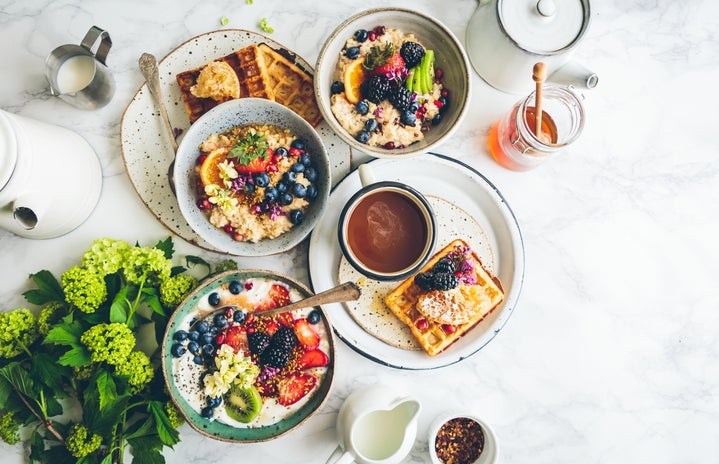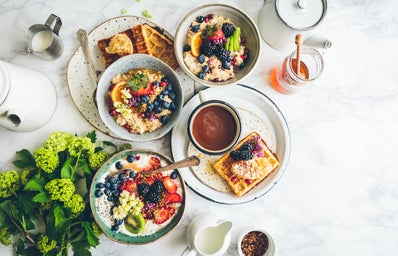With the rise of mukbangs and “What I Eat in a Day” videos popping up on YouTube channels each week, food and its relationship to media is changing. There are over 370 million posts tagged #food on Instagram and they aren’t going anywhere anytime soon. You probably see at least one picture of food a day even if you aren’t following any food specific accounts. Content creators in every industry let their followers know what’s on their plates or in their mugs. And it makes complete sense; in order to keep those followers coming back for more, they need to relate to the posts in their feeds. Everyone eats and almost everyone cooks—and there is no such thing as too little food inspiration.
According to food magazine Saveur, the first online food forum was published in 1997. (It’s still active today! Check out Chowhound here.) In 2002, Julie Powell launched the Julie/Julia Project where she chronicled her attempts to cook every recipe in Julia Child’s “Mastering the Art of French Cooking.” By 2015, there were over 277 million food bloggers developing recipes and talking about restaurants online. With the expansion of the digital age people are finding communities away from the kitchen table.
As an avid foodie, I’ve noticed a change in the way people document food on social media. I follow a good number of foodstagrams that each have their own niche: New York restaurants, food publications, professional chefs, and college students. What I’ve noticed is that each type of account—or I should say each account owner—wants to make food accessible to their audience. Whether it’s offering a discount code for a certain ingredient or food delivery app or giving home cooks some tips from the pros, every owner wants their audience to get in the kitchen.
Bon Appétit is a leading food publication that needs no introduction. You’ve probably seen Claire Saffitz try to remake your favorite childhood snacks countless times or have dreamt of Chris Morocco making you dinner every night. It’s as if the Test Kitchen chefs became household names almost overnight. My theory for the spotlight that shines on these personalities stems from what I discussed above. The videos on Bon Appétit’s YouTube channel have become increasingly more personable in the last few years. Gone are step-by-step videos on how to bake a chocolate cake. There are multiple series like Gourmet Bakes and Kitchen Talks that you can’t find anywhere else on YouTube. What makes these chefs so relatable is the behind the scenes clips that come with the video—some might consider their mistakes bloopers (and there are few; these people know what they’re doing), but it’s what makes them relatable to their audience. If someone at Bon Appétit can under measure an ingredient, so can the folks at home.
Just some of the series featured on the Bon Appétit YouTube channel.
Check out Carla Lalli Music testing out BA’s Best Banana Bread. I can vouch for its title.
The relationship between food and media is only going to grow in the next few years. Social media and the Internet connect people and introduce new ideas and places that you never thought existed. Amateur food accounts on social media and food publications’ social media presence let anyone get in on the fun in the kitchen. Food media serves as inspiration for your next meal or next restaurant outing. Get out there, and then get back in the kitchen.



